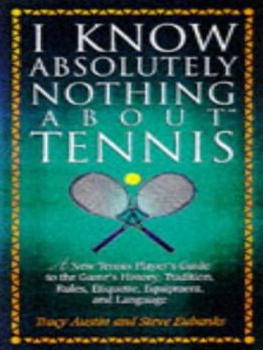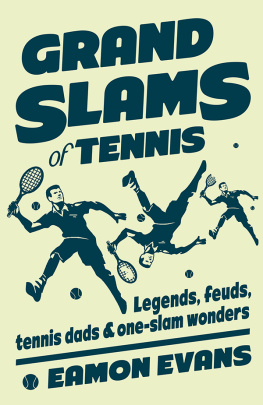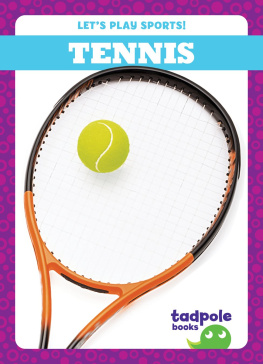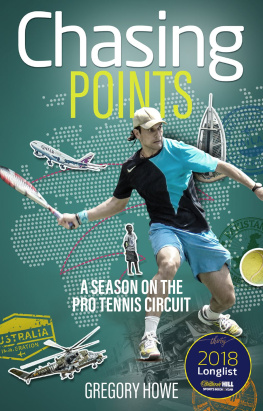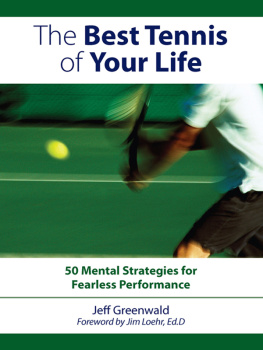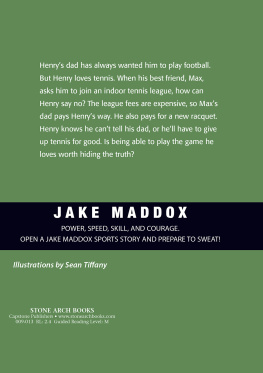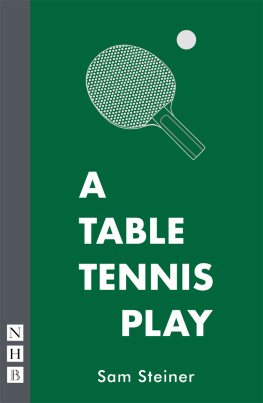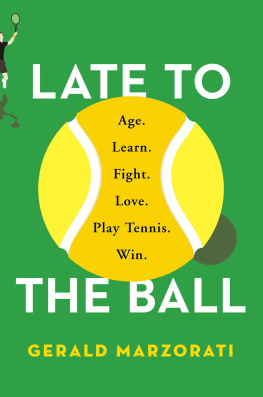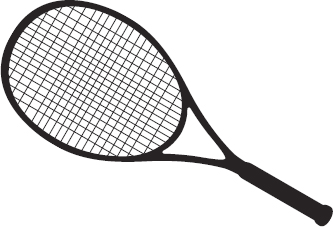
PLAY TENNIS
FOREVER
A physiotherapists guide to keeping fitter, younger and healthier
SUZANNE CLARK
Play Tennis Forever
First published in 2014 by
Panoma Press
48 St Vincent Drive, St Albans, Herts, AL1 5SJ, UK
www.panomapress.com
Book layout by Neil Coe
Printed on acid-free paper from managed forests.
ISBN 978-1-909623-59-0
The right of Suzanne Clark to be identified as the author of this work has been asserted in accordance with sections 77 and 78 of the Copyright Designs and Patents Act 1988.
A CIP catalogue record for this book is available from the British Library.
All rights reserved. No part of this book may be reproduced in any material form (including photocopying or storing in any medium by electronic means and whether or not transiently or incidentally to some other use of this publication) without the written permission of the copyright holder except in accordance with the provisions of the Copyright, Design and Patents Act 1988. Applications for the Copyright holders written permission to reproduce any part of this publication should be addressed to the publishers.
This book is available online and in bookstores.
Copyright 2013 Suzanne Clark
Disclaimer
The information in this book is provided for informational purposes only and is not a substitute for professional medical advice. The reader is advised to consult an appropriate healthcare professional regarding all aspects of individual health care. The author and publisher make no legal claims, expressed or implied, and the material in this book is not to replace the services of a healthcare professional. The author, publisher, and/or copyright holder assume no responsibility for the loss or damage caused, or allegedly caused, directly or indirectly by the use of information contained in this book. Individuals who suffer from any disease or are recovering from an injury of any sort should consult their doctor regarding the advisability of undertaking any of the exercises and/or treatment regimes suggested in this book. The author and publisher specifically disclaim any liability incurred from the use or application of the contents of this book.
All contents of this book were accurate and up to date at the time of printing.
ACKNOWLEDGEMENTS
I would like to thank the members of my tennis club who have inspired me with their commitment, humour and enjoyment of their tennis. It is always a pleasure to play with you all. Thank you to Nataline, Wendy and Barry from the club, my test readers and models.
To Anne, my test reader and childhood tennis partner, thank you. It seems so long ago that we started playing tennis together but how wonderful that were both still enjoying it all these years later.
Thank you to Nicki, Fiona and Celia for your invaluable advice, expert knowledge and generosity of time. You are a credit to the profession.
Thank you to my parents who sent me to tennis camp as a child, sparking my love for the game, and for encouraging me to become a physiotherapist. I couldnt have achieved what I have through life without their support and guidance.
Finally, the biggest thank you to my husband, Stacey, for his never-ending belief in my abilities. No matter what the challenge he is always there encouraging me to achieve more.
Photographs by Ed Crowe
CONTENTS
CHAPTER 1
How your muscles change with age
CHAPTER 2
How your muscles work when you play tennis
CHAPTER 3
Common tennis injuries
CHAPTER 4
Injury prevention
CHAPTER 5
Diet and hydration
CHAPTER 6
Home exercise programme
CHAPTER 7
Photographs of exercises and stretches
CHAPTER 8
How to look after yourself if you are injured
CHAPTER 9
Personal exercise record
CHAPTER 10
Equipment and useful websites
INTRODUCTION
Stay fitter, younger and healthier to play tennis; that really is the simple message of this book. As a qualified physiotherapist, I know that you can keep your muscles younger and fitter by following a simple exercise programme at home. Contrary to what many of my fellow tennis players think, you are never too old to benefit from these types of exercises and I decided to spread the word so that everyone knows how to keep playing as they get older.
Most people dont realise that they can make such a difference to the ageing process of their muscles. How exciting you can stay physically younger, keep playing tennis for longer and be fitter and faster. So, no thoughts of retiring from the tennis court yet, whatever your age! How can you achieve this? It all comes down to a little time spent regularly doing some resisted exercise. This type of exercise makes the muscles contract against a resistance, e.g. lifting a weight or pulling against an elastic exercise band. There are many forms of exercise, but resisted exercises are the key to building strength and slowing the ageing process. And if you could fit those exercises easily into your day so that they become part of how you do your regular daily activities, then it really isnt going to be a task, more a way of life.
I have loved tennis for as long as I can remember, and play at club level. After having a break from playing I recently joined a local club and was impressed by how many older people play regularly. They are out there, come rain or shine, enjoying the game and benefiting both physically and socially. However, with my physiotherapists hat on, I noticed that quite a few of them had muscle or joint problems. Many wore some form of strapping for tennis elbow or supports for painful knees. When injured it often took them a long time to get back to fitness, and some of them would re-injure again fairly soon after coming back to play. I also noticed that very few seemed to do any form of warm-up or cool down routines other than going straight into knocking up with some long hit strokes, a couple of serves and that was it. They were really counting on luck to prevent them from getting injured, hoping they were fit enough to continue to cope with the demands they were asking of their bodies.
I asked around at other clubs, and it seems that it is very common for recreational players not to do effective warm up/cool down routines. In fact, very few did any exercise other than perhaps taking regular long walks, or going to yoga classes.
All types of exercise have a role to play in keeping you fit and healthy. Walking is great for aerobic exercise and yoga excellent for flexibility and core stability, but my interest is in resisted/strengthening exercises (anaerobic exercise). Resisted exercises target specific muscle fibres that are affected by age and start to waste as you get older. This is not resisted exercise as described by a friend of mine I know what you mean, I have resisted exercise all of my life! Needless to say he isnt a sports player!
As you get older, your muscles can lose around 1% muscle mass a year from the age of 30 unless you work on them. So by the time you are 70, you could have lost between 30% and 40% of your muscle mass. However, as the process is so gradual, you dont really notice it until you have lost quite a significant percentage of your muscle bulk.
Talking to my fellow players, I realised that this wasnt common knowledge. Some even thought that it becomes much harder to change your muscles from the age of 50 onwards. However, there is a wealth of research that proves you are never too old to work on your muscles and make them stronger, effectively slowing down the ageing process.
Next page


